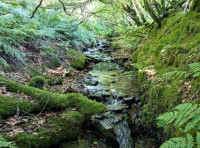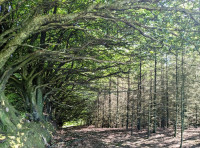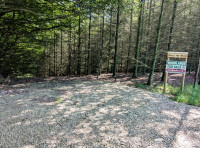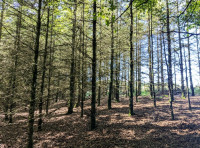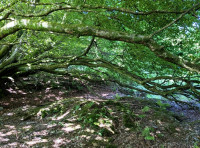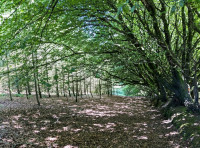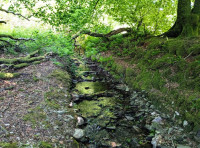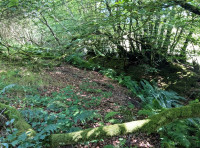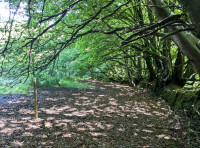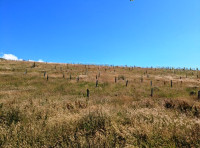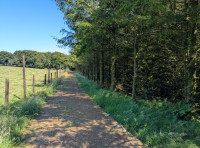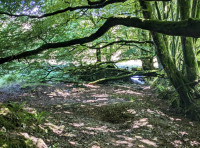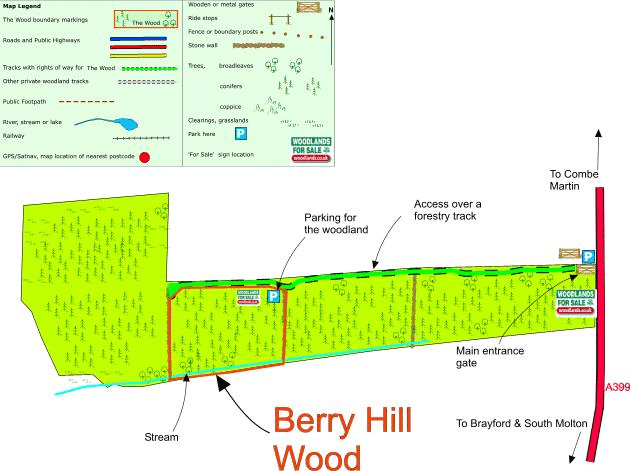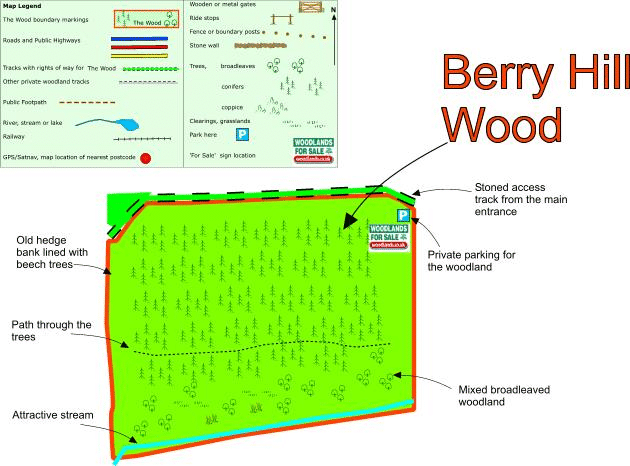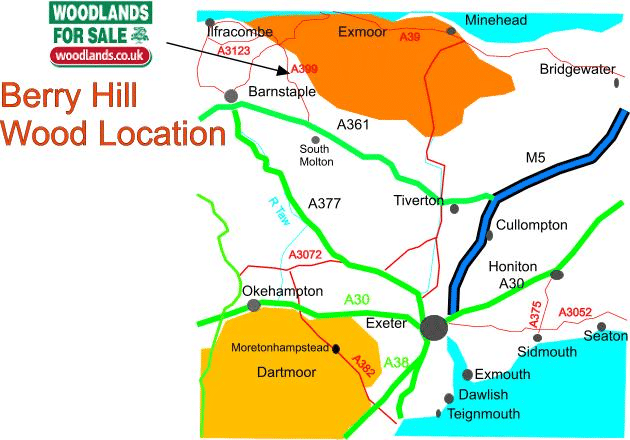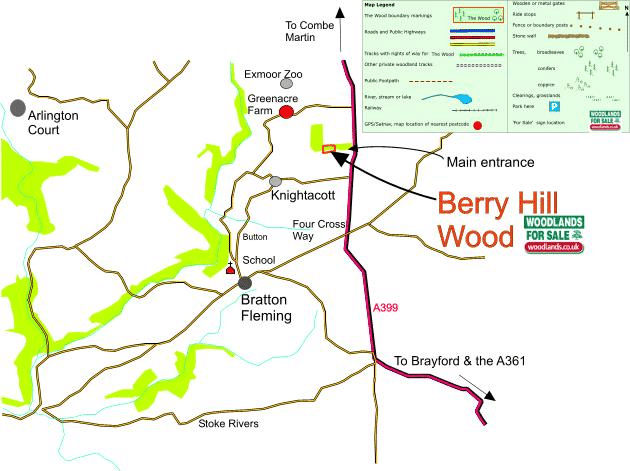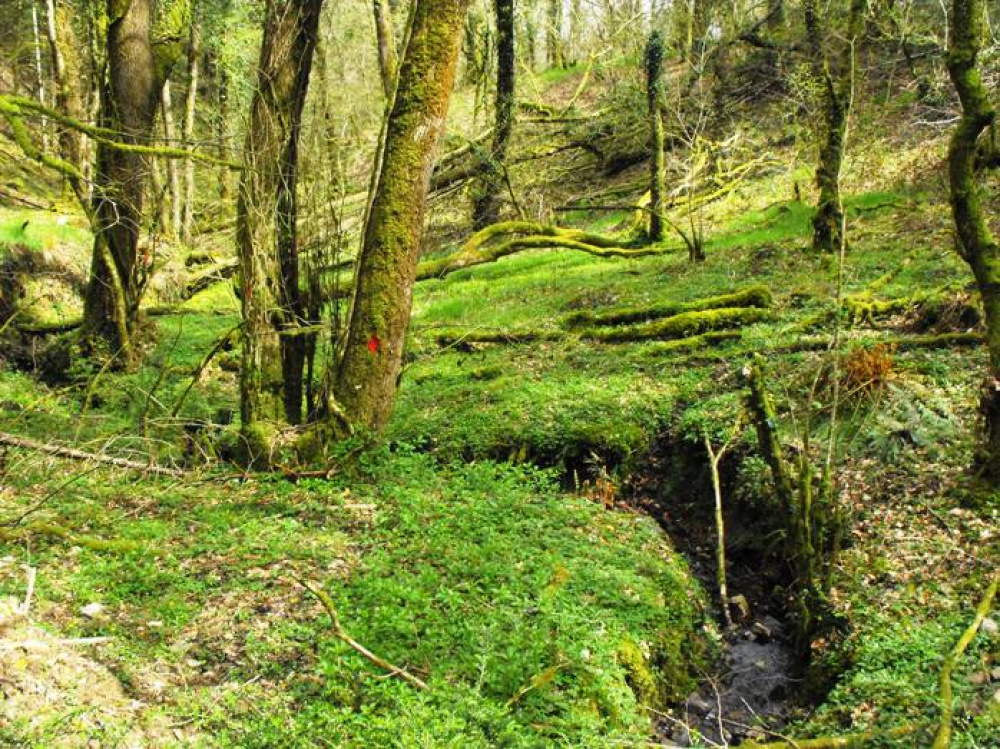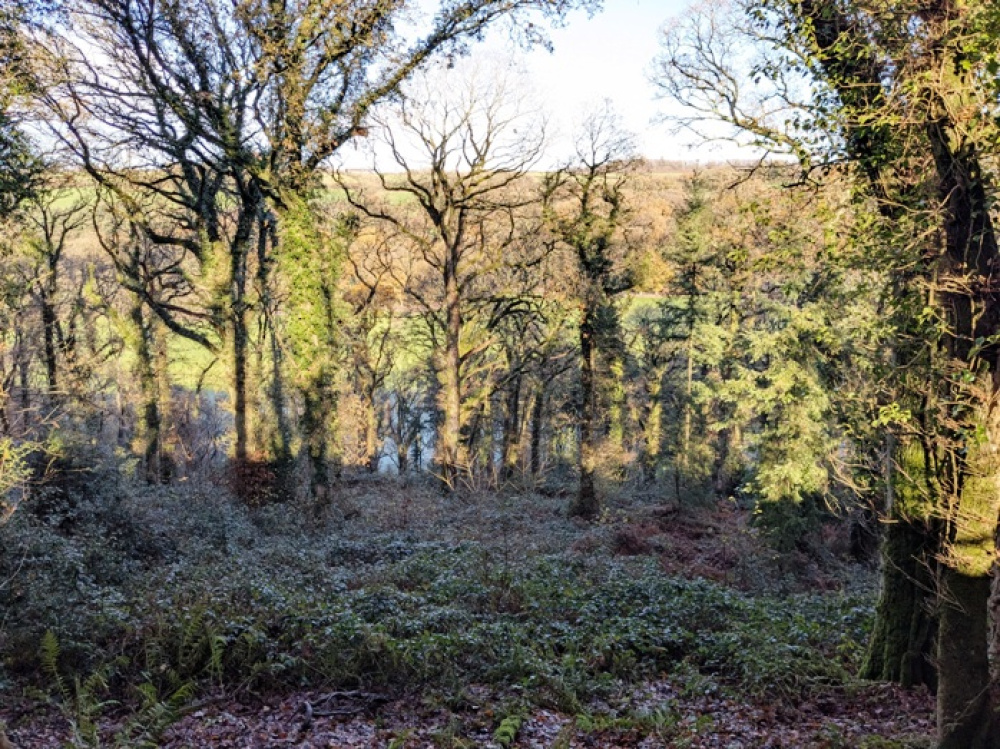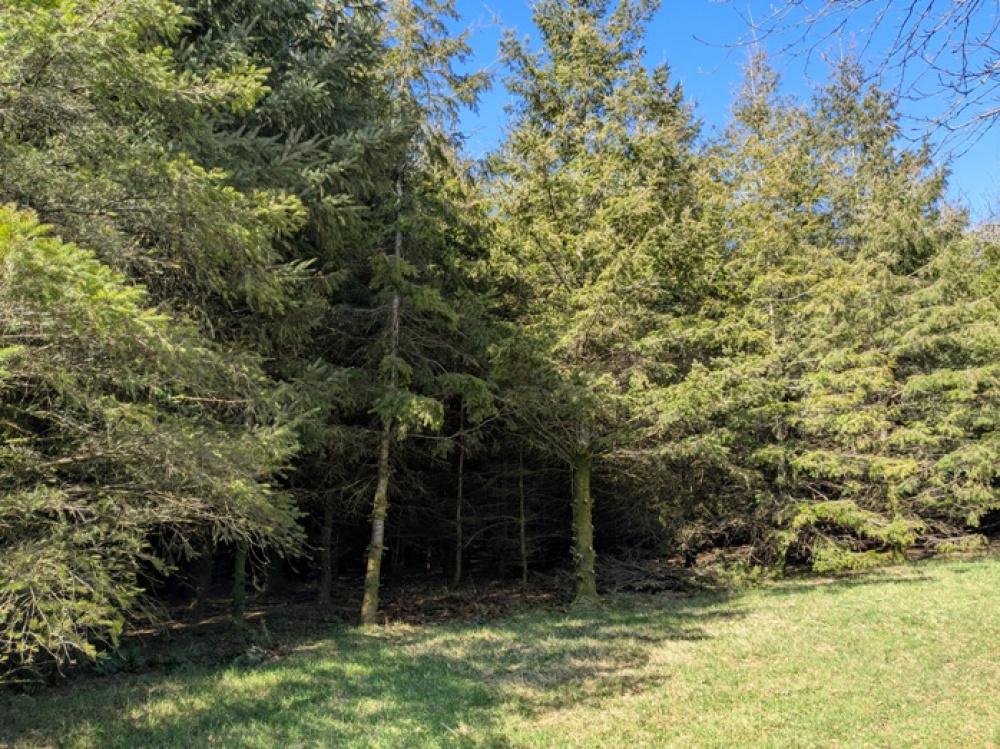Berry Hill Wood £69,000 Freehold
- Bratton Fleming, Near Lynton, Devon
- about 3 ¾ acres
- Devon
-

Attractive stream along the south of the woodland
-
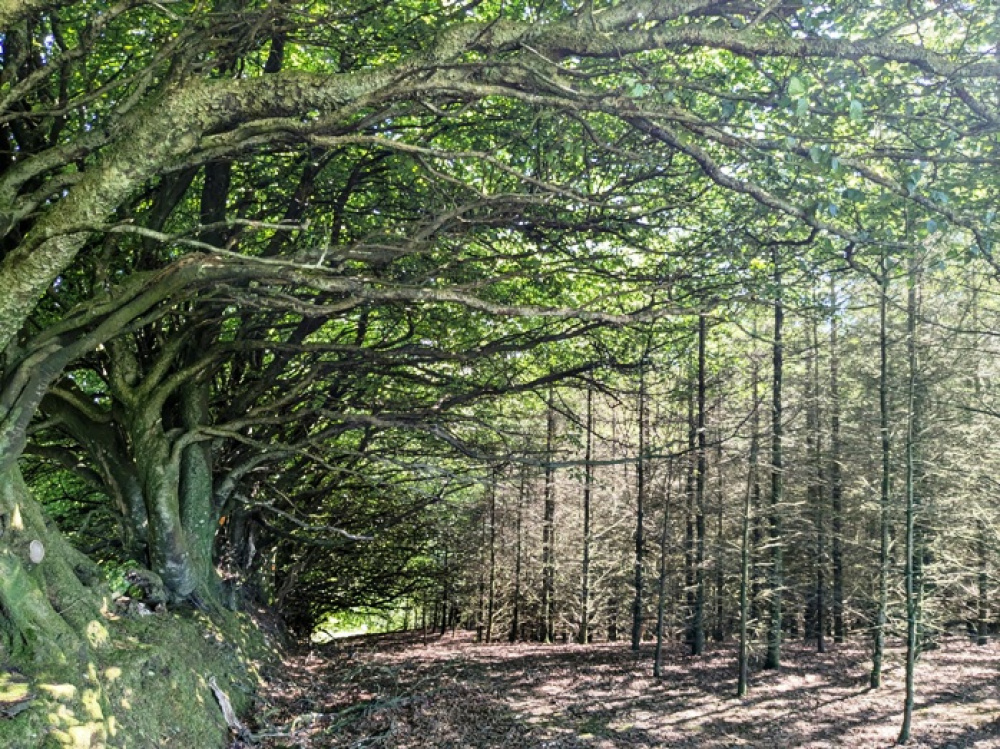
Beech lined hedge bank looking like a surf wave
-
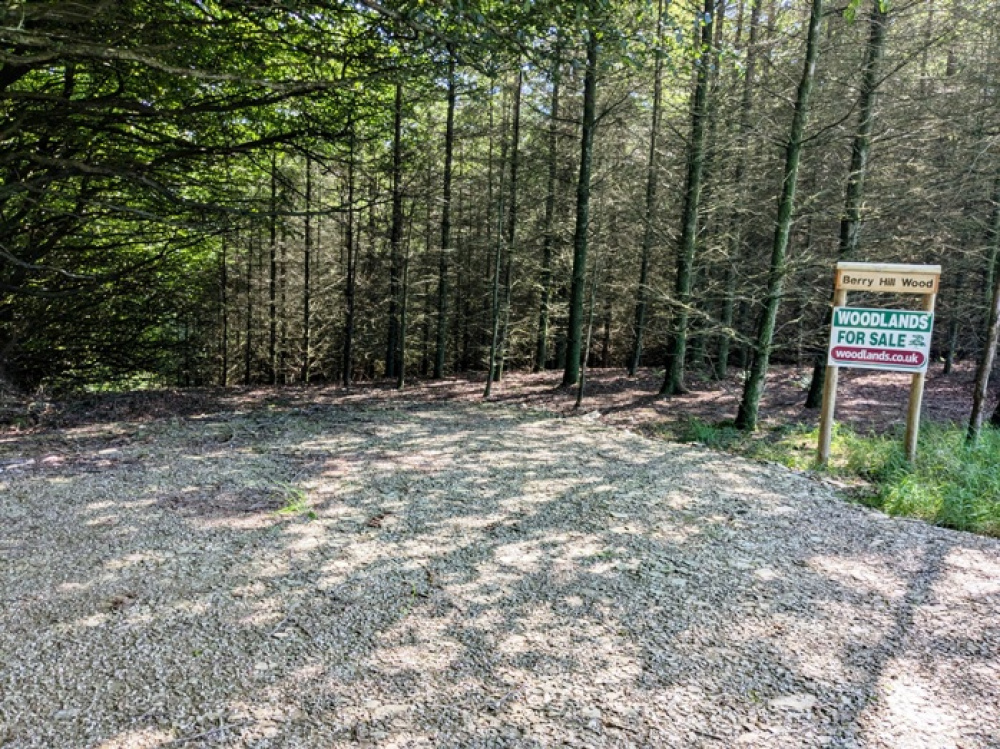
Entrance and private parking area
-
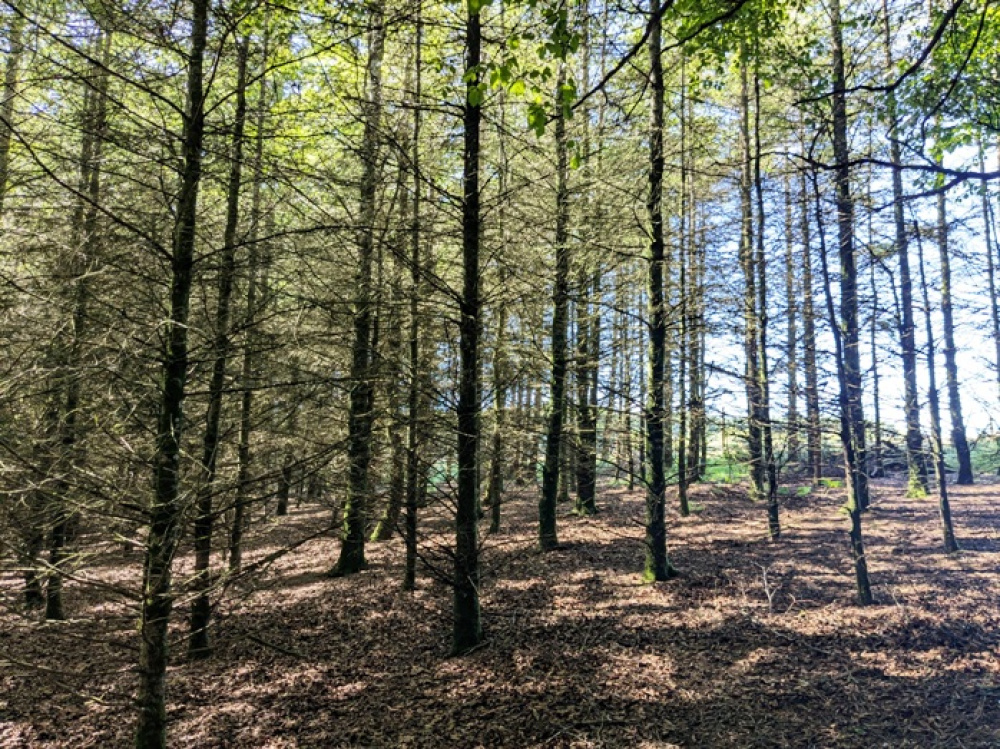
Douglas fir trees
-
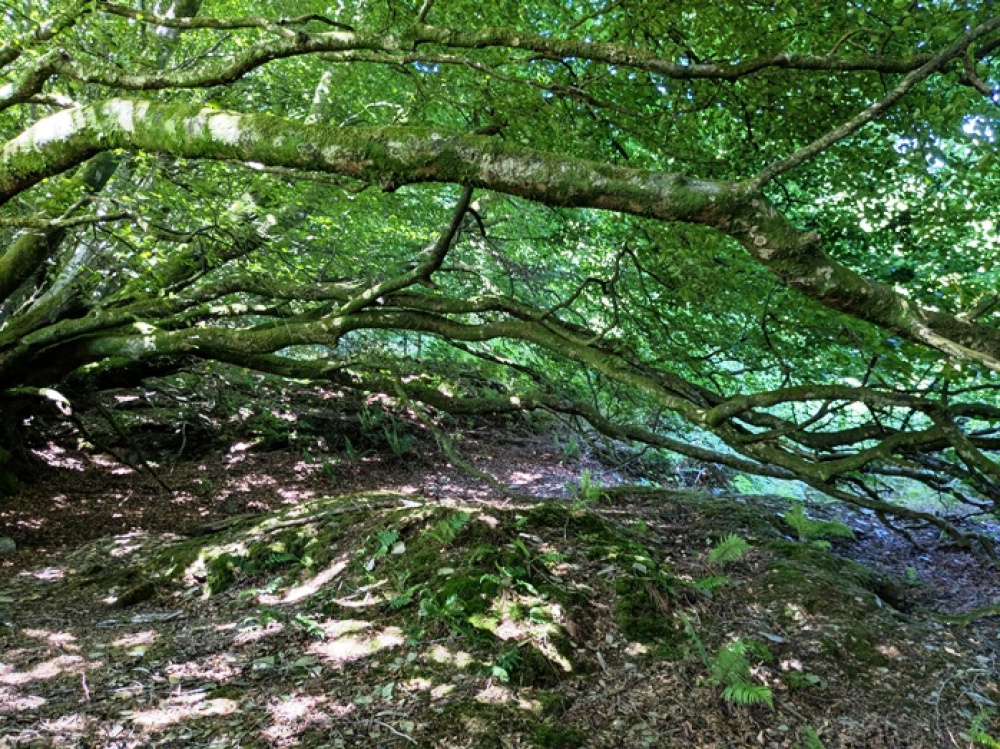
Impressive beech boughs
-
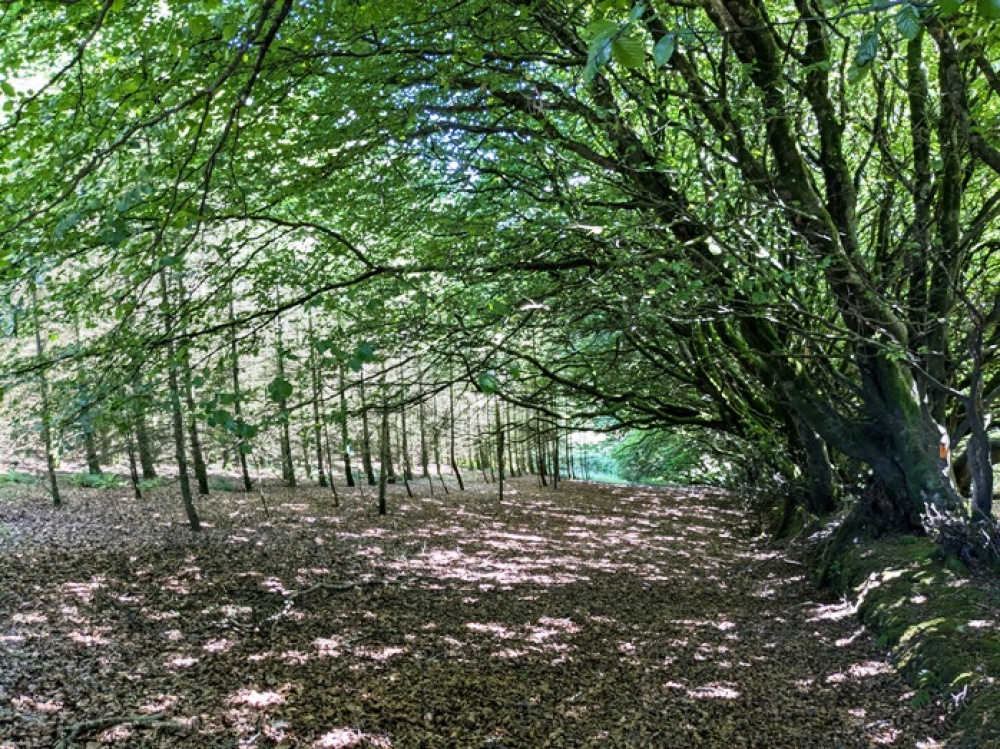
Dappled sun shining into the woodland
-
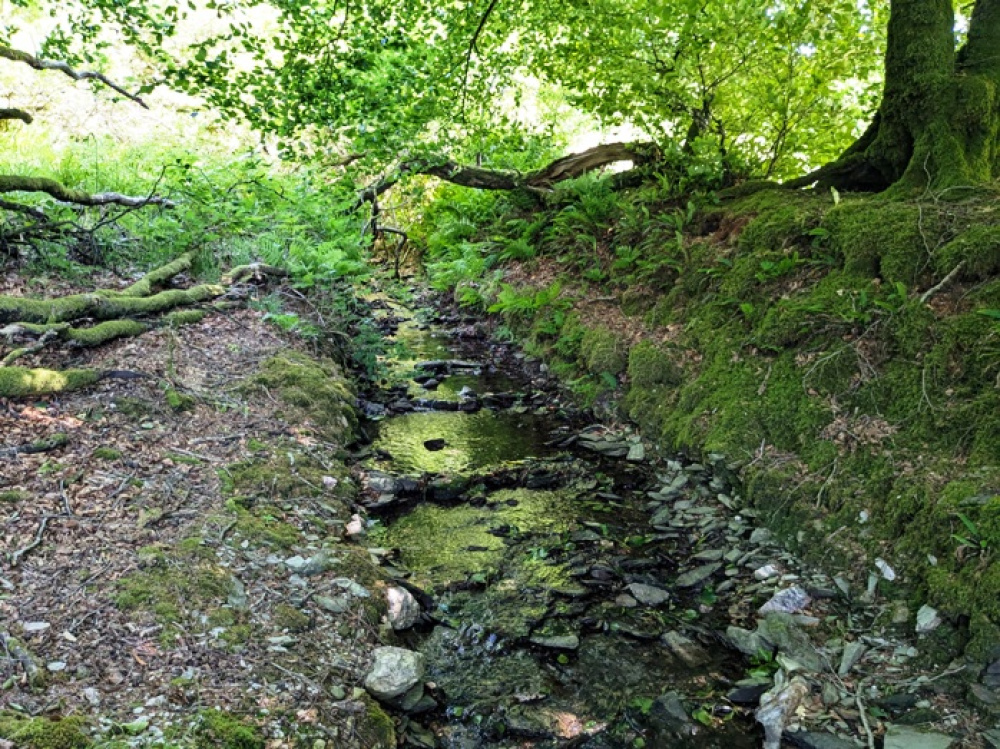
Glistening watercourse
-
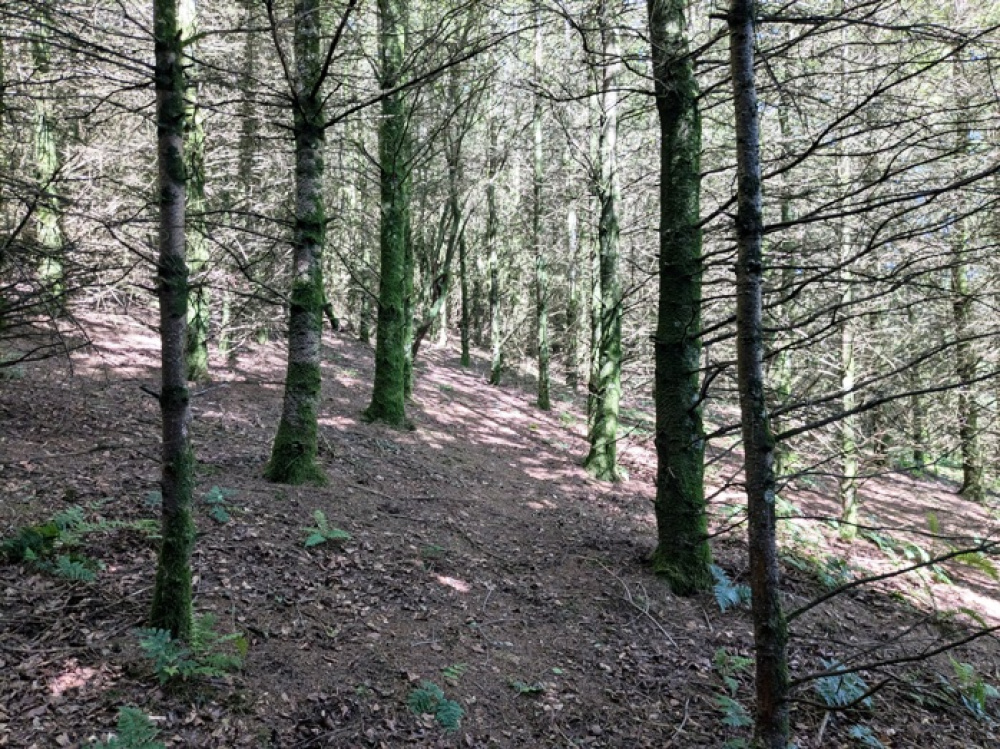
Cut path through the trees
-
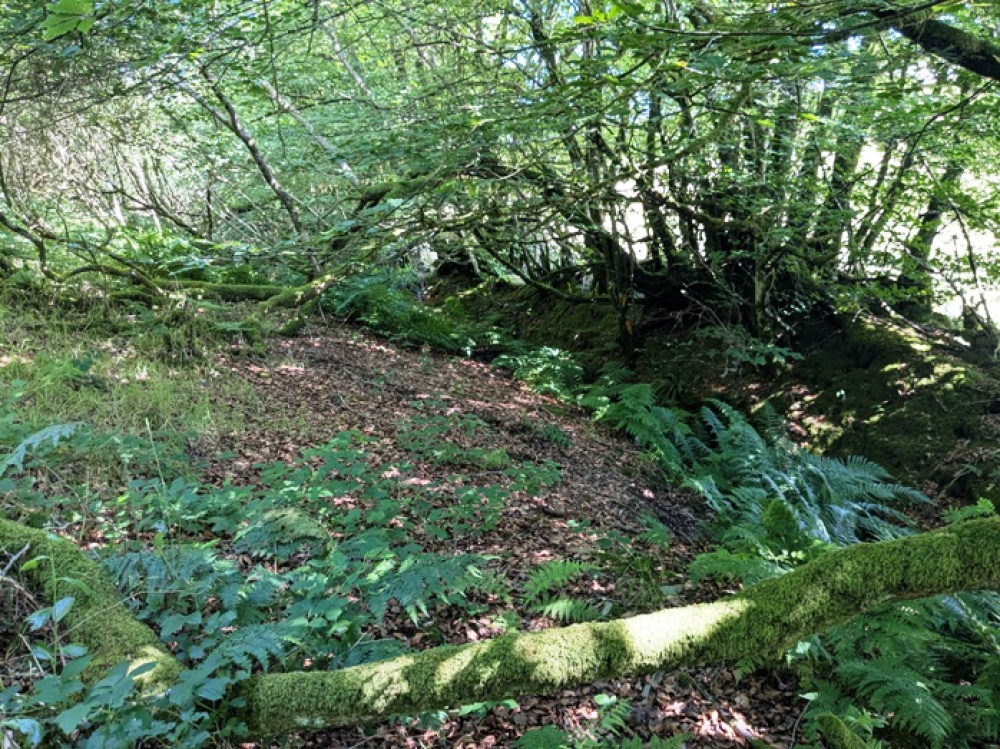
Clearing by the stream
-
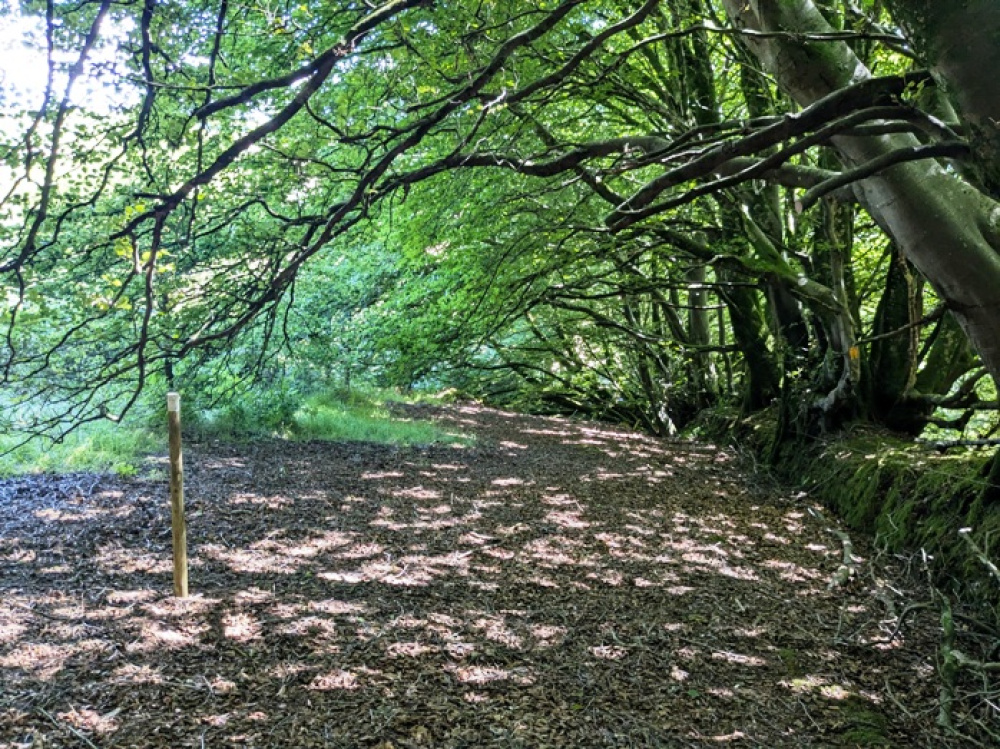
Showing the white post which indicates the path through the conifer trees
-
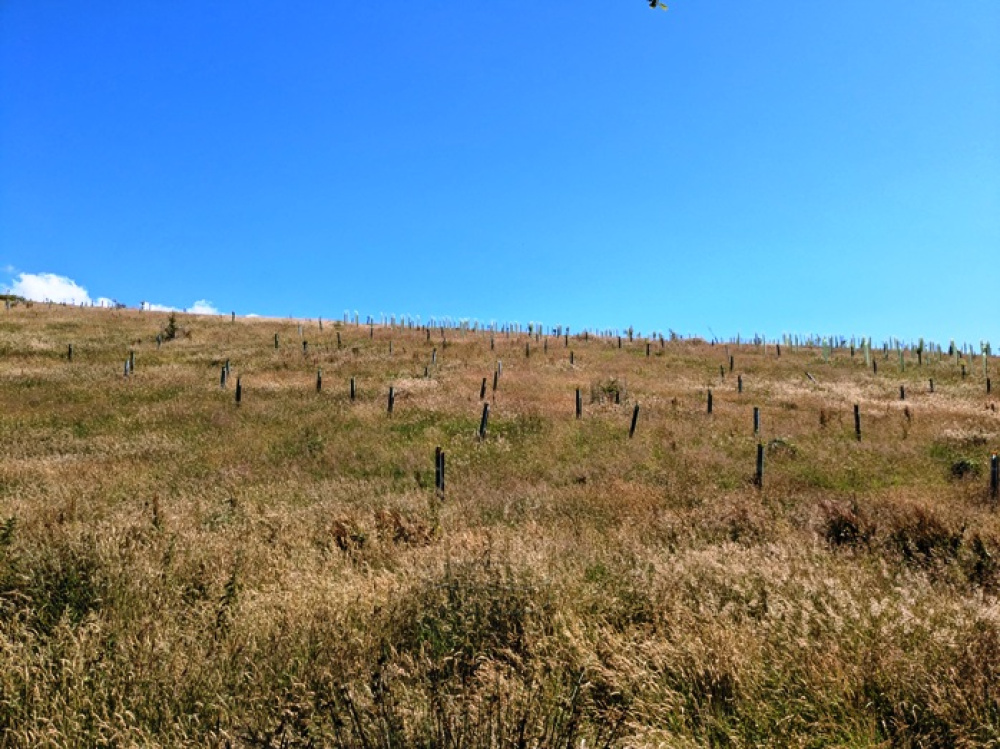
View from the south of the woodland
-
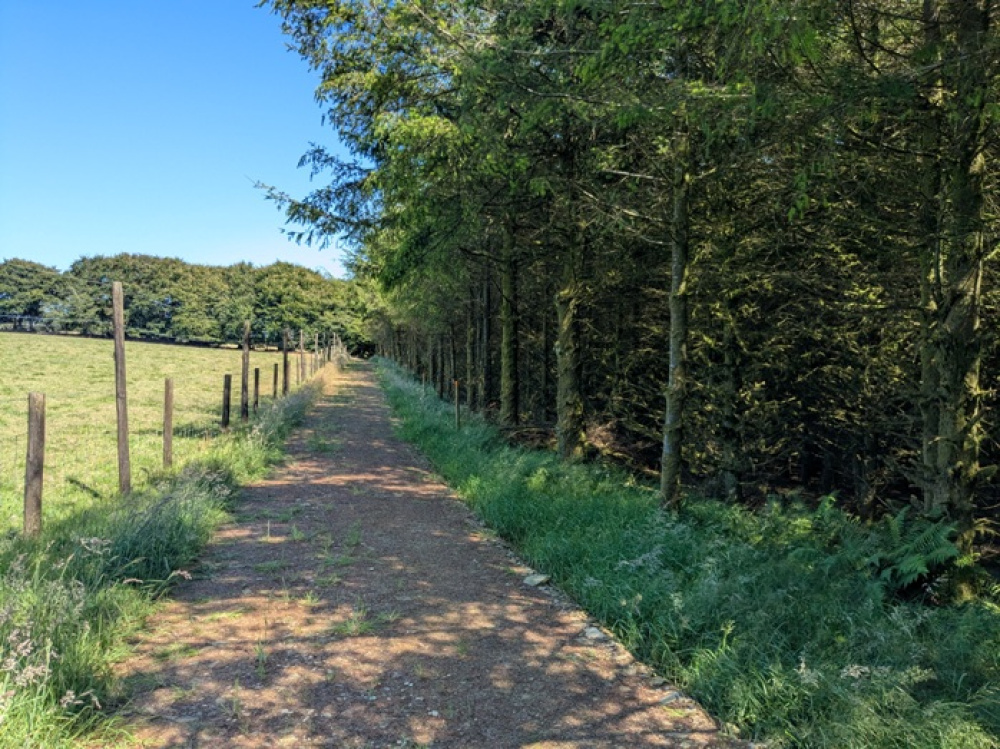
Stoned access track along the northern edge
-
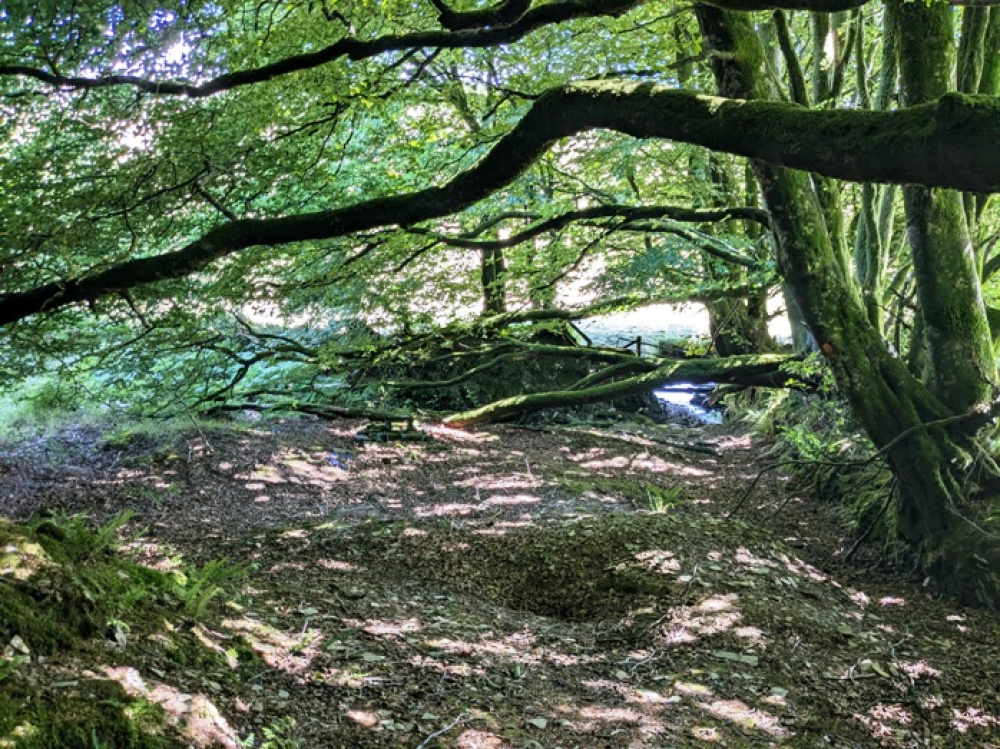
The south western edge of the woodland
Description
Berry Hill Wood nestles on the upper slopes of a peaceful valley, approximately 300 metres above sea level, near the village of Bratton Fleming in North Devon. Surrounded by open farmland and areas of new tree planting, the woodland enjoys a tranquil setting close to Exmoor National Park and is within a 30-minute drive of the stunning North Devon coastline.
Access is straightforward via the A399, which connects South Molton to Combe Martin. A well-maintained stoned forestry track leads directly to the entrance of the woodland, where a spacious parking area—suitable for a campervan—is located.
Open rides run along both the western and eastern boundaries, providing excellent internal access. A cleared path also runs through the centre of the woodland, marked at each end by white-tipped posts, inviting exploration and making it easy to navigate.
Trees
Berry Hill Wood is predominantly composed of Douglas fir (Pseudotsuga menziesii)—a versatile evergreen conifer highly valued for its exceptional timber qualities. Commonly used for cladding, decking, flooring, and structural beams, Douglas fir offers strong potential as a future timber crop.
Toward the southern end of the woodland, a mixed broadleaved area features willow and hazel, creating a rich, natural habitat that supports a wide variety of wildlife.
Running along the western and eastern boundaries, mature beech trees line the banks, adding character and ecological diversity to the woodland.
Wildlife
Birds of prey can often be seen soaring overhead, scanning the surrounding grasslands for movement below. As dusk falls, tawny owls glide silently through the woodland canopy, adding to the sense of quiet seclusion. Red deer also frequent the area, taking advantage of the shelter and tranquillity of Berry Hill Wood, which forms an important part of their local range.
Features
Great care has been taken in the construction of the stone banks that mark the western and eastern boundaries of the woodland. These beautifully crafted features are shown on the 1888 map of the area, indicating they are at least 137 years old—a testament to the long-standing stewardship of the land.
A stream flows gently from east to west along part of the southern boundary, its source located around 400 metres further east within the larger woodland. This watercourse eventually merges with several larger streams before making its way to the River Yeo, adding to the site's natural charm and ecological value.
Access, tracks and footpaths
Access to Berry Hill Wood is via the A399, where a stoned area provides convenient parking in front of the main gate. The purchaser will be provided with a key to the gate, ensuring full vehicular access to the woodland. From the gate, a well-maintained stoned forestry track leads directly to the woodland entrance and is suitable for year-round use by most vehicles.
A dedicated parking area is located at the entrance to Berry Hill Wood, offering easy and practical access for vehicles.
There are no public rights of way within the woodland or along the access track, ensuring a high level of privacy and seclusion.
Rights and covenants
As is the case for all our woodlands, the purchaser will be asked to enter into a covenant which serves to protect the peace and quiet of the woodland.
Activities
Berry Hill Wood is ideally suited for occasional overnight stays with family and friends, offering a peaceful retreat into nature. A solid hardstanding area provides a perfect spot for camper-vans, making short breaks and weekend escapes both easy and comfortable.
The woodland’s tranquil atmosphere makes it an excellent setting for forest yoga, wildlife watching, or simply unwinding in nature. There’s also the potential to create your own wildlife viewing hide, allowing for quiet observation of the woodland’s many natural visitors.
Local area and history
To the southeast of the woodland lies the prominent ridge of Berry Hill, an area rich in history and home to a scheduled monument—a prehistoric barrow located near its summit, offering a fascinating glimpse into the region's ancient past.
Nearby points of interest include fishing at Wistlandpound Reservoir, and a visit to North Thorne, a deserted medieval village just north of the nearby village of Bratton Fleming.
Bratton Fleming itself is located approximately 7 miles northeast of Barnstaple, perched on a ridge that extends from the foothills of Exmoor National Park. The village lies around 3 miles from the park boundary and features the historic Church of St Peter as well as a local village shop.
Berry Hill Wood also serves as an excellent base from which to explore the North Devon coast. The charming seaside village of Combe Martin is just a 15-minute drive away, while the popular surfing beaches of Woolacombe, Saunton Sands, and Croyde can be reached in 30 to 40 minutes by car.
Particulars and plans were prepared by our local manager, Stuart Brooking.
Wood maps
Wood map
Boundaries
All boundaries are indicated with orange markings on posts and trees.
The northern boundary is along the shared access track.
The eastern boundaries is an old hedge bank lined by trees.
The southern boundary is an old hedge bank.
The western boundary is an old hedge bank lined by trees.
Find this wood
Location
- OS Landranger: OS No. 180
- Grid ref: SS 658 398
- Nearest post code: EX31 4SG
- GPS coordinates: 51.1421, -3.91964
Location map
Directions
- Travelling north on the A361 leave this road at the North Aller Roundabout to join the A399 signposted towards Combe Martin, Ilfracombe and Woolacombe.
- Continue along this winding road for around 10 miles looking out for signs to Exmoor Zoo.
- Look out for a left turn for Knightacott and then, after a left hand bend, you will see a 'woodlands for sale' sign on your left. The entrance to the main woodland gate is just after the sign.
- Park in front of the gate leaving your phone number visible in case anyone needs to access the track and carefully climb over the gate and turn right onto the track.
- Stay on this track for a few hundred metres until you see a sign for Berry Hill Wood on the left hand side by a parking area. This is the entrance to the woodland.
- If you walk down past the name sign you will see a post with a white top, this indicates where a path through the woodland starts.
Sat Nav / GPS note: The post code EX31 4SG is for the point shown on the location map by the red dot.
What3words at the main entrance: sway.showcases.assembles
How we support our buyers
Membership of the small woodland owners’ group
£300 for a woodland course of your choice
One year's free membership of the royal forestry society
Please note this wood is owned by woodlands.co.uk.
Our regional managers are often out working in our woodlands, so if you email an offer and want to be sure it has been received, please phone our manager on their mobile phone. The first offer at the stated price which is accepted, whether by phone or email, has priority.
Please take care when viewing as the great outdoors can contain unexpected hazards and woodlands are no exception. You should exercise common sense and caution, such as wearing appropriate footwear and avoiding visiting during high winds.
These particulars are for guidance only and, though believed to be correct, do not form part of any contract. Woodland Investment Management Ltd hereby give notice under section 21 of the Estate Agents Act 1979 of their interest in the land being sold.
A tranquil woodland with easy access and a meandering stream, nestled within the breathtaking rolling hills of the North Devon UNESCO Biosphere – a special region recognised by the United Nations for its outstanding natural beauty, rich wildlife, and vibrant local culture.
